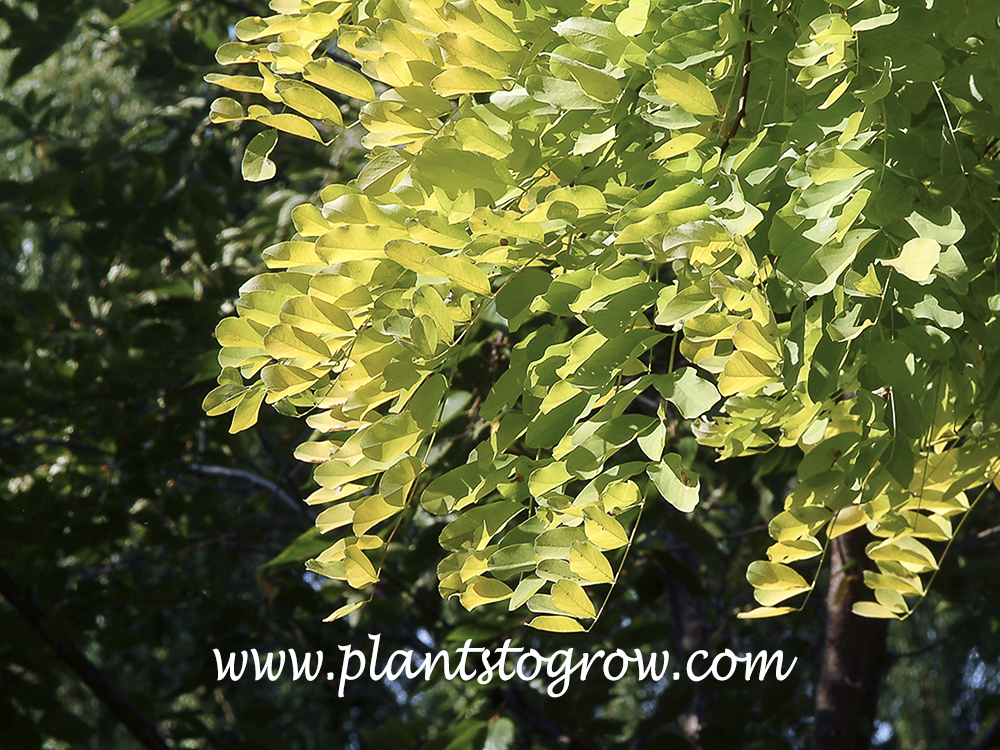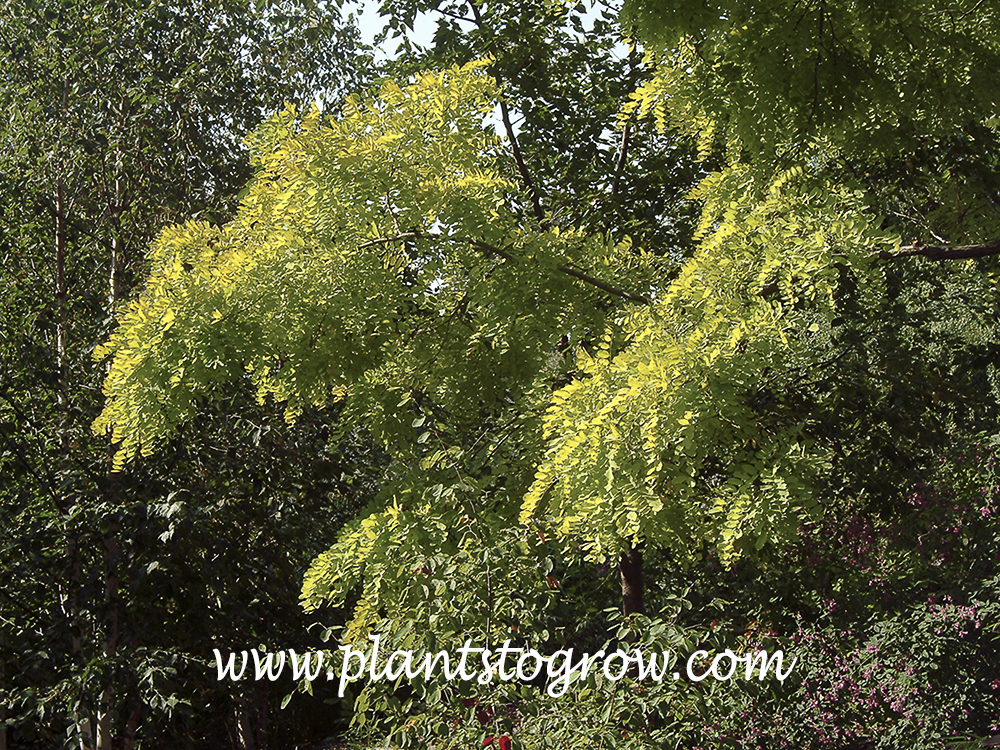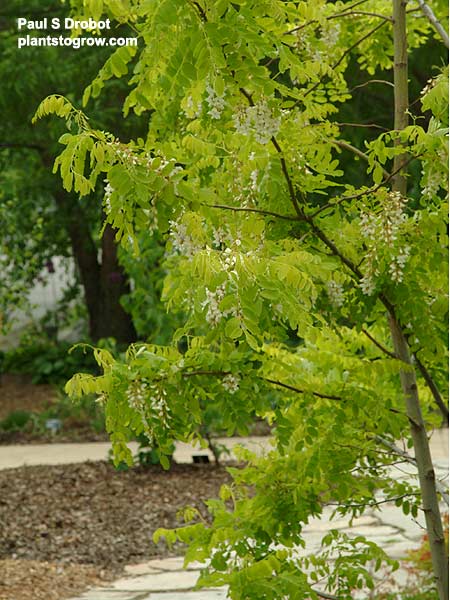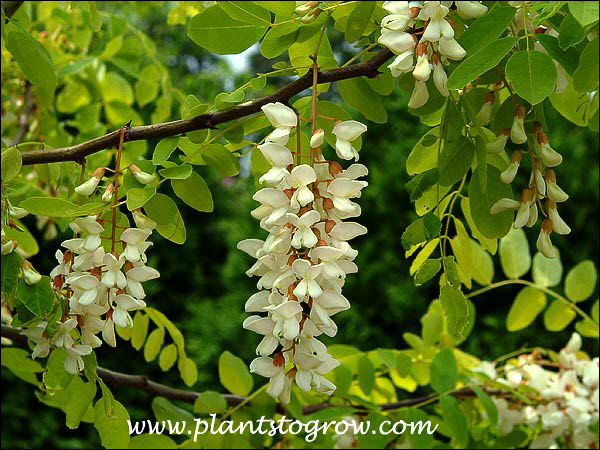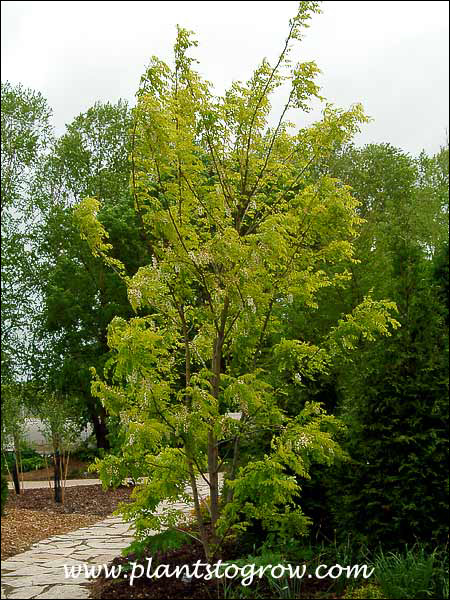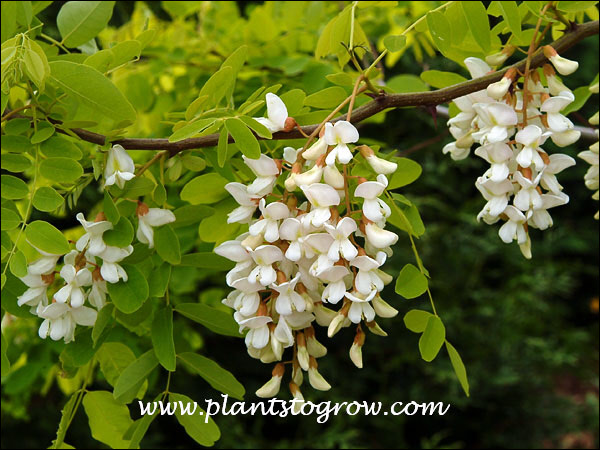| Description | Frisia Back Locust (Robinia pseudoacacia) A yellow foliage form of the Common Black Locust |
|---|---|
| Pronunciation | (roe-BIN-nee-uh)(sue-doe-uh-KAY-shuh) |
| Plant Type | Trees Deciduous |
| Hardiness Zone | 5 |
| Sunlight | full |
| Moisture | very adaptable |
| Soil & Site | very adaptable |
| Flowers | white, fragrant, 5 lobed, in numerous drooping racemes , close-up at night |
| Fruit | brown oblong legume, red-brown seeds maturing in September through October |
| Leaves | yellow, alternate, pinnately compound with 7-19 leaflets reaching 8-14" in length |
| Stems | twigs are zigzagged, paired spines form at each leaf |
| Dimensions | Reaches up to 50-80 feet tall. May form a single stem or develop into thickets by root suckering. |
| Cultivar Origin | Discover in 1935 by W, Jansen in a nursery in Holland. Appeared in North America commerce in 1958. |
| Misc Facts | The genus name Robinia is in honor French Herbalists, Jean and Vespasian Robin. They grew Locust in Europe in 1610. Pseudoacacia refers to resemblance to Acacia (psuedo is a prefix for false). The wood from Locust has been used to build ships, log houses, make wooden nails and made into strong durable lumber. |
| Notes & Reference | #39-The Natural History of Trees (Donald Cultrose Pattie), #93-North American Landscape Trees (Arthur Lee Jacobson) |

Cart
